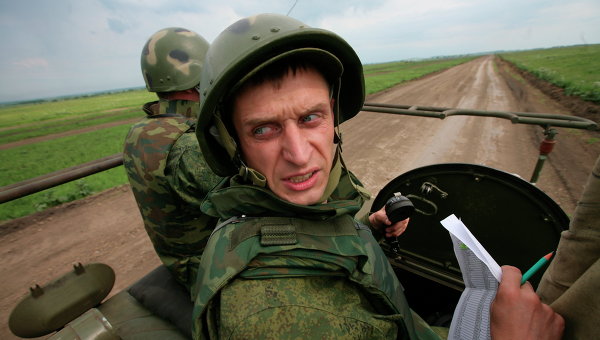
Russia Seeks to Impose New ABM Treaty on the US by Developing BMD
Publication: Eurasia Daily Monitor Volume: 7 Issue: 136
By:

This week, the new First Deputy Defense Minister, Colonel-General Vladimir Popovkin (Retired), described in an interview in the official government newspaper, Rossiyskaya Gazeta, his priorities in reforming the defense ministry and rearming Russia’s armed forces. Popovkin last month replaced Colonel-General Alexander Kolmakov, who was not only ousted, but also sent into early retirement from active service. President, Dmitry Medvedev, announced that Popovkin will be in charge of “rearmament and procurement” (EDM, June 24).
Popovkin stated that the defense ministry’s administrative structure will be radically changed. A “civilian branch will be created” in charge of supplying the troops, while a “military branch” within the defense ministry will oversee operations, combat training and “the use of armaments.” According to Popovkin, all procurement of weapons and supplies will be under civilian control, while the Rear and Armaments Services are stripped of their procurement duties (Rossiyskaya Gazeta, July 12).
The Russian defense ministry’s structure was inherited from the Soviet era as a purely military organization with the defense minister, a top general or marshal. The present Defense Minister, Anatoly Serdyukov, appointed in February 2007, is the first true civilian in his position since Leon Trotsky 90 years ago. Now Serdyukov is extending the present radical military reform in Russia by creating a civilian defense ministry coupled with a military command structure –a replica of present Western national military defense organizational structures.
Popovkin, at age 52, was retired last year from active service to become a civilian official in charge of defense procurement to rearm the military that today possesses an increasingly obsolete arsenal with Cold War-era weapons, “especially the navy, the air force and the army.” Popovkin’s first procurement priority is Russia’s strategic deterrent: strategic nuclear forces, the early warning system, and the air and air-space defenses. The second priority is the procurement of satellite-guided precision weapons. His third priority is to update the automated command and control systems. According to Popovkin, in two or three years, a joint force automated command and control system must be created “with an open architecture that could allow its further enhancement in any direction” (Rossiyskaya Gazeta, July 12).
Popovkin’s fourth priority is enhancing the strategic mobility of the Russian military, since “with a one million-strong armed force we cannot keep equally strong groupings on all strategic directions.” The production of the Soviet-designed heavy An-124 transport aircraft must be resumed in Ulyanovsk and the heavy transport Mi-26 helicopter in Rostov-on-Don. The development of the medium-range An-70 transport aircraft will be continued jointly with Ukraine (Rossiyskaya Gazeta, July 12). The main feature of the recent massive operational-strategic exercise, Vostok 2010, in the Far East was strategic mobility. The personnel of the 28th Motorized Rifle Brigade from the Volga region were transported without heavy weapons to the Far East. The brigade was rearmed with tanks, guns and other heavy equipment from local arsenals in the Far East and then took part in Vostok 2010 that culminated with the use of a hypothetical nuclear device field simulation (Voyenno Promyshlennyy Kuryer, July 14).
Popovkin explained that the defense ministry requested 36 trillion rubles ($1,161 billion) for defense procurement from 2011 to 2020 “taking into account all forces that oppose Russia on all strategic directions.” To withstand all potential threats that may emerge before 2020, Russia, according to Popovkin, must have 100 percent modern strategic deterrent armaments and 70 percent modern conventional forces arms. Since actual defense spending will be less, a number of conventional procurement programs (new tanks and army vehicles) will be postponed. New Iskander-M ballistic missiles, modern helicopters, S-400 and S-500 antiaircraft missiles will remain a priority (EDM, June 10; Rossiyskaya Gazeta, July 12).
The S-500 will be an air and ballistic missile defense (BMD) system. The director of the Almaz-Antey design bureau, Igor Ashurbeyly, announced earlier that the S-500 will have a range of 600 kilometers (km) and could intercept ballistic missiles with a range of 3,500 km, flying at speeds of 5 km/second (RIA Novosti, December 16, 2009). According to Popovkin a new powerful interceptor missile is being developed for the S-500 system that will allow it to “intercept strategic ballistic missiles and warheads at speeds of 7 km/second” in space at a 200 km altitude (Interfax, July 13). The S-500 will, in fact, be a semi-strategic BMD system developing close to the range of the speed of Intercontinental Ballistic Missiles (ICBM’s) at 9 km/second.
The long history of efforts to develop a BMD based on hit-to-kill technology convinced many in the Russian military that it would be futile and technically unattainable. In the 1970’s, the Russian military abandoned all attempts to develop so called “direct interceptors” that destroy an enemy warhead by ramming it in a “bullet hitting a bullet” fashion. Instead, Russia developed an “indirect” nuclear BMD system (the A-35 deployed around Moscow) that destroys incoming ballistic warheads by nuclear megaton explosions in the sky. The latest modification to the Moscow BMD –the A-135– was deployed in the 1990’s and is operational, but is not being further developed. The successor, S-500, according to Ashurbeyly, will also carry a nuclear warhead, allowing it to kill all incoming warheads without distinguishing between real ones and dummies.
The S-300 system may be used to attack land or sea targets, as demonstrated during Vostok 2010 (Voyenno Promyshlennyy Kuryer, July 14). Nuclear-tipped A-35 interceptors, as well as nuclear-capable S-300 and future S-400 and S-500’s may also be dual-use as conventional or nuclear medium or shorter range ballistic missiles. Air Force Chief, Colonel-General Alexander Zelin, announced: “Before 2020 we will procure many S-400 and S-500 systems.” The S-500 will be the backbone of the Russian BMD, “but its parameters are different from the US BMD,” according to Zelin.
Moscow has been declaring it will use an “asymmetric response” to counter US BMD by developing new ICBM’s and warheads that could effectively avoid American defenses. Now a new nuclear BMD (the S-500) is being developed. Moscow hopes that this will pressure Washington to agree to sign a new ABM treaty, like the 1972 version that was scrapped in 2002, to strictly limit missile defense and avoid a costly BMD arms race (Interfax, July 13).




